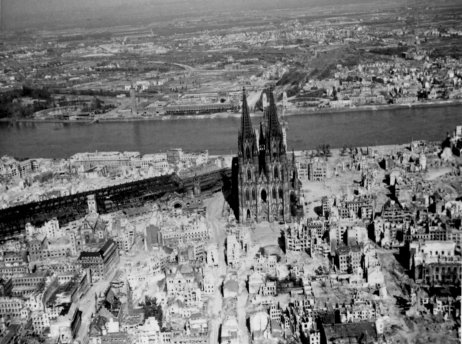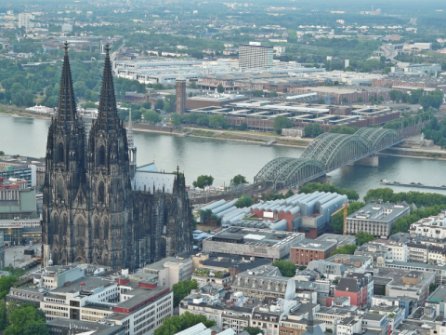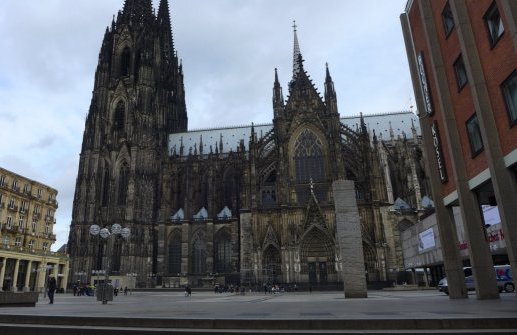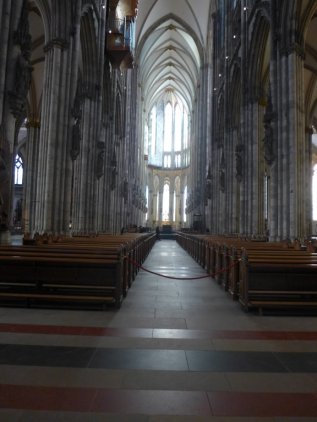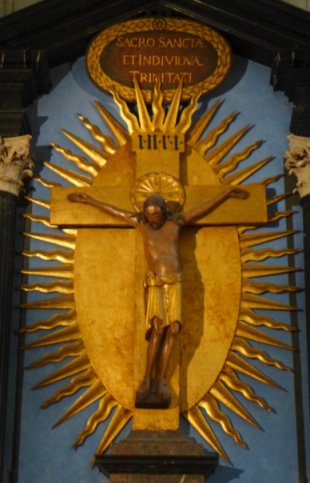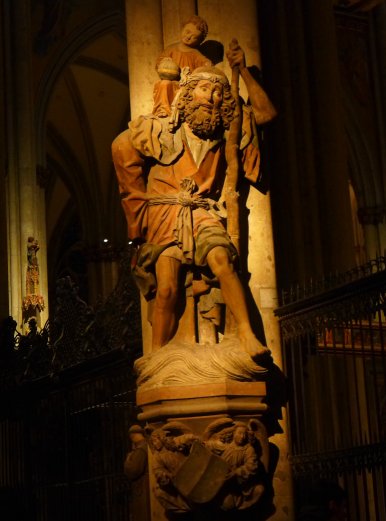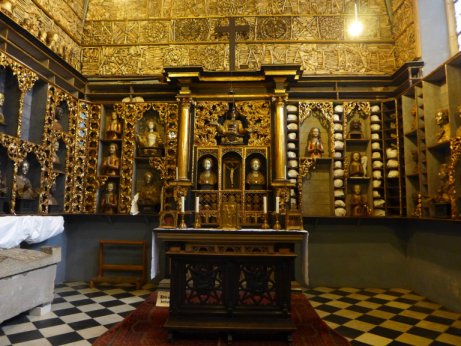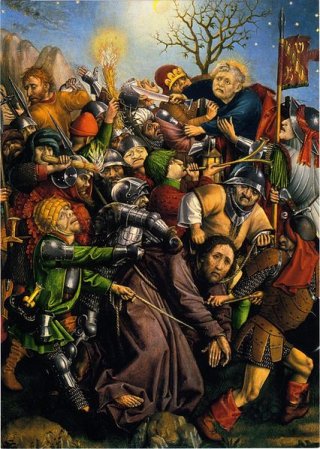|
Cologne and Aachen |
|
'The Dom': Cologne Cathedral. A wonderful building, and an astonishing survival of world war II. Some might suggest divine providence; a possible reason is that the RAF wanted to keep the spires in place as they were a useful navigation aid. |
|
|
|
|
|
|
|
| I've recently written about the Gero cross when writing about the crucifixion here, so this was something I was most anxious to see, as was the shrine of the Magi. Both superb, and beautifully displayed. | |
|
|
|
| There were many other splendid things too; the stained glass, which was presumably removed during the war, and the medieval statue of St Christopher. | |
|
|
|
| Cologne is noted for its Romanesque churches. Some were almost completely destroyed in the war, but have been rebuilt 'as they were, where they were.' Something of a contrast with London's Wren churches. We couldn't visit all of them but we managed to fit in three; St Martin, St Gereon, and, my number one, St Ursula. Having written on the legend of St Ursula and the 11,000 virgins here, I was anxious to go there - but would we be able to visit the 'Golden Chamber' and see the relics of all those virgins? Our guide book wasn't encouraging; it suggested that a visit was only possible by 'special arrangement'. But when we got there, it was open and, for three euros each, we were allowed in, and allowed to take photographs. | |
|
|
|
|
Lots more to see in Cologne - the Archaeological
museum has the superb Dionysus mosaic and the World's finest
collection of Roman glass. The medieval section of the Wallraf-Richartz
gallery |
|
|
|
|
| Art in context index Home page - enjoy the site | |
